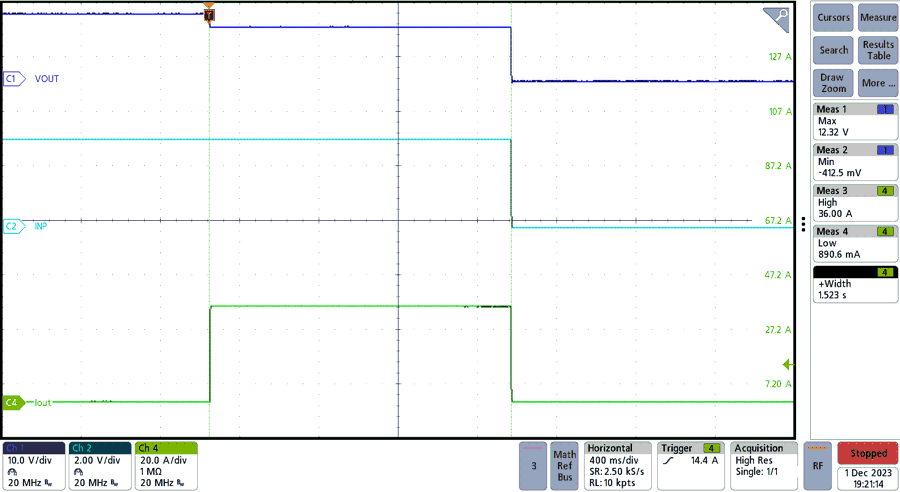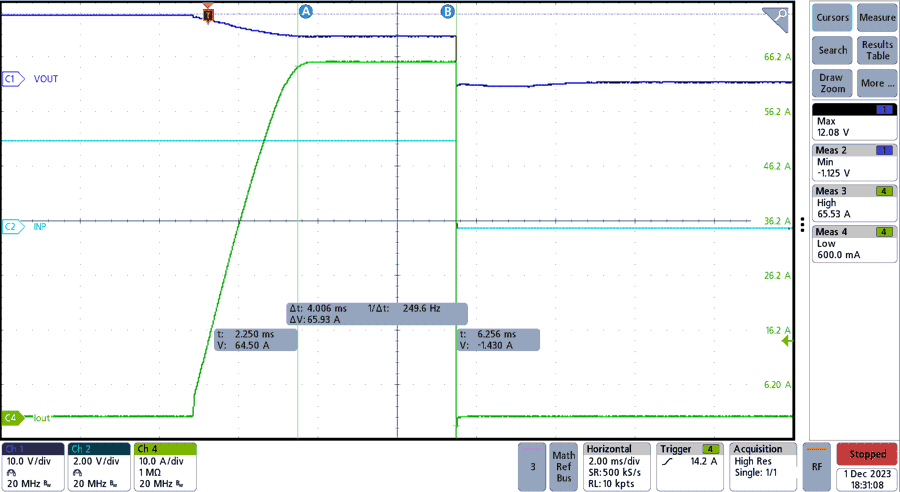TIDUF43 August 2024
- 1
- Description
- Resources
- Features
- Applications
- 6
- 1System Description
- 2System Overview
- 3System Design Theory
- 4Hardware, Software, Testing Requirements, and Test Results
- 5Design and Documentation Support
- 6About the Author
4.4.4 Overcurrent Protection
The test setup for verifying the software-based time-current characteristics involves a similar setup as seen in Figure 4-2, except the LM53625xQEVM is removed from the path. A 1000W electronic load is connected directly to the output of the TIDA-020065 and the load is configured in constant resistance mode.
For this test, fuse channel 3 is used, which means Inom = 25A and I2t = 1000A2s. When the load experiences a constant overcurrent of 36A, a shutdown time of 1.49s is expected. It takes 1.523s for the I2t algorithm to pulldown INP and shutdown the output.
 Figure 4-9 Overcurrent Event
(Inom = 25A, I2t = 1000A2s)
Figure 4-9 Overcurrent Event
(Inom = 25A, I2t = 1000A2s)Figure 4-10 and Figure 4-11 both show results from I2t shutdown testing using fuse channel 1 and fuse channel 2, respectively.
 Figure 4-10 I2t Tests for Fuse
Channel 1 (Inom = 15A and I2t = 340A2s)
Figure 4-10 I2t Tests for Fuse
Channel 1 (Inom = 15A and I2t = 340A2s) Figure 4-11 I2t Tests for Fuse
Channel 2 (Inom = 20A and I2t = 520A2s)
Figure 4-11 I2t Tests for Fuse
Channel 2 (Inom = 20A and I2t = 520A2s)In addition to fuse I2t behavior for overcurrents up to 65.5A, the fixed-delay shutdown behavior was also captured.
For this test, the fixed-delay threshold was set to 65.5A in software. As shown in Figure 4-12, the 65.5A pulse is close to the maximum monitorable current for this design, so the MSPM0L1306-Q1 asserts INP low when the pulse is active for 4ms to shutdown the output.
 Figure 4-12 Fixed-Delay Shutdown
Event
Figure 4-12 Fixed-Delay Shutdown
Event